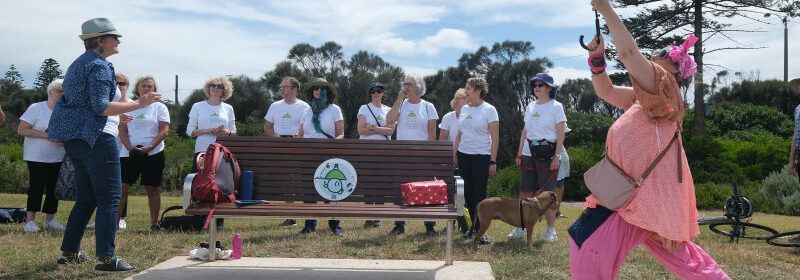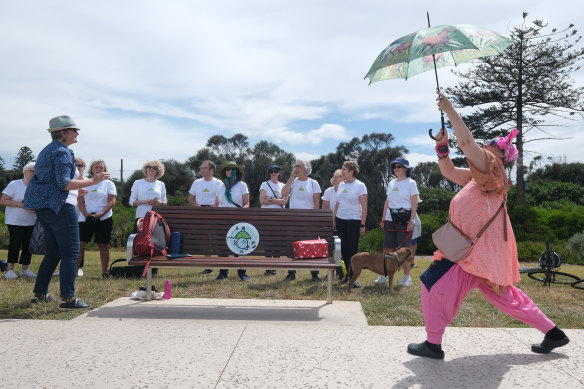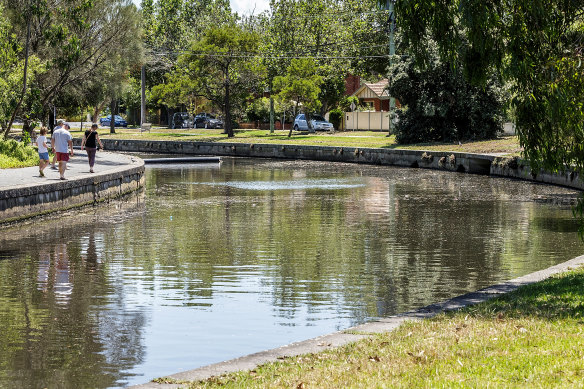How European migrants shaped Elwood’s beachside identity

Save articles for later
Add articles to your saved list and come back to them any time.
Growing up in Elwood offered a glimpse of a suburb that was still trying to find its identity after the Second World War.
It was not the desired location in the early days, but property was cheap, and it was a good fit for many young families. We moved into the suburb in 1957, soon after my dad was injured. He was in the army reserves and was knocked over by a small, armoured vehicle and in a serious condition.
With two young children and another on the way, Mum was anxious to find permanent accommodation for the family. Our house was a cheap purchase due to the ominous flood marks halfway up the wall, which were a sign of things to come. The suburb continued to experience regular floods from the 1960s, brought on by a mixture of high tides and storms.
Dad survived and became a successful film director, and we remained in the house for many years.
Elwood and its bordering suburb of St Kilda saw the first wave of European migrants needing a safe place to call home. Rooming houses sprung up everywhere. Acland St in St Kilda was abuzz with groups of men standing on corners smoking and drinking coffee and no doubt trying to come to terms with their relocation.
Ormond Road in Elwood, now overflowing with cafes and shops supporting the local dog parade, was home to a delicatessen where rolls of liverwurst sausage and salami hung from the ceiling, pickled cucumbers were packed into barrels and pickled herrings and roll mops sat in large containers.
Passerby Samantha Taplin dancing as the Elwood Community Choir sings from the Elwood Singing Walking Trail in 2022.Credit: Luis Enrique Ascui
It was often my task to visit the shop on the weekend and choose what we would be having for lunch. We called this our “pick lunch” and were always joined at our place by a crowd of neighbours and a mix of interesting visitors.
In the little shopping strip, we also had Jo the greengrocer and Tommy the butcher who delivered on Saturdays in time for this lunch and cold beers.
Milk came on the back of a horse and cart and the sounds of the Clydesdale horse plodding down the street in the early hours of the morning was always a welcoming sound.
Bread was delivered in small trucks stopping outside the home and those that did not have refrigerators received blocks of ice. One of the neighbourhood boys decided it would be a clever idea to crawl under the ice truck one day and try to get some ice. Unfortunately, the truck moved over his leg, leaving a painful tyre imprint that was often displayed to anyone interested.
The canal, pictured in 2016, is popular among walkers.Credit: Daniel Pockett
The wild banks of what was known as the Elwood Canal, now called Elster Creek (running from McKinnon to Elwood beach), were managed by a solitary works man dressed in waders. We would watch in fascination as he moved through the canal at a snail’s pace armed with a pitchfork to manage the weeds, but his work never seemed to make any difference.
We thought nothing of paddling or swimming in the canal after floods, often resulting in cut feet from the broken glass that littered the bottom, but we didn’t care – it was all part of the excitement.
Our neighbourhood was a maze of holes in the fences that joined a number of backyards and allowed the children to move from house to house, only coming in when the mothers called out “teatime” at dusk.
Elwood Beach was also our backyard. We would stay all day in the summer and invariably get burnt to a crisp. We ate half-frozen pies and looked with envy at the sumptuous picnics that the Greek and Italian women laid out on the grass.
The layout of the suburb changed in the ’60s with many of the California bungalows replaced with flats built by a new migrant group. These solid builds remain and are a testament to the skills of this new construction group; they are now considered prized investments.
Of course, nowadays, Elwood is considered a more salubrious suburb. I am still living there and note with some humour the slightly envious tone of people when they find out where you live. The apartments, (not flats, if you do not mind) are popping up everywhere along with double-storey, architecturally designed houses.
The cars are snazzier, the dogs are fluffy, and the shopping strip is now crowded out on weekends, the cafes bulging with the newer residents. The plane trees that line our streets are still there standing proud and large, offering a glimpse of a past English life.
The bay still stands as a soothing full stop to the suburbs and remains inundated on weekends in the summer, often with the children of those same families that came in the ’60s. Despite the changes, there is still that village feel to the neighbourhood that people crave and makes it hard to leave.
The Opinion newsletter is a weekly wrap of views that will challenge, champion and inform your own. Sign up here.
Most Viewed in National
From our partners
Source: Read Full Article

